contact me at [email protected] link
Realistic shooters like Arma have set the gold standard when it comes to authentic gunplay, often incorporating real-life ballistics into their gameplay. It’s a fascinating challenge to attempt to bring this level of realism into your own game while ensuring minimal performance impact, especially in a multiplayer setting.
During my research, I stumbled upon the intriguing approach used in Insurgency: Sandstorm, which blends hitscan and projectile spawning mechanics. However, despite numerous explanations of the system, there remained some ambiguity. Some sources suggested that projectiles spawned after a set time, while others claimed it was based on distance.
With these vague details in mind, I decided to craft my own system. The first step was to study real bullet trajectories, and I found invaluable data on gundata.org.
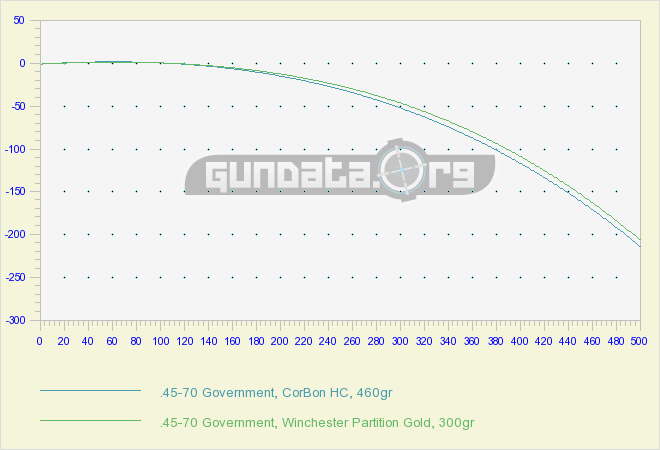
Take, for instance, the bullet trajectory of the .45-70, a cartridge I’ve come to love from playing TheHunter: Call of the Wild, one of my cherished games. Now, observe the image below:
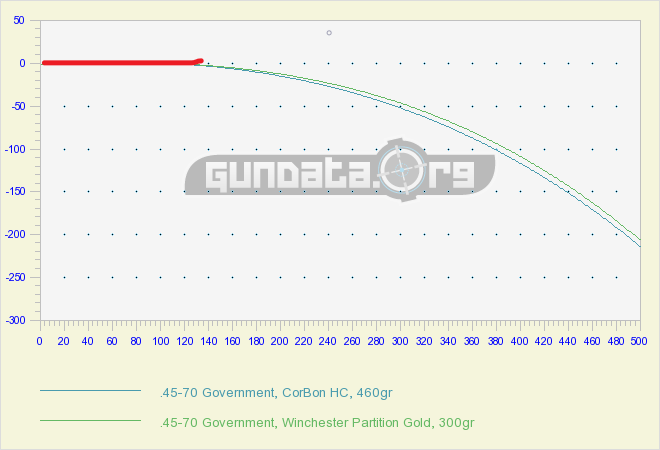
Examining the graph, you can observe that there’s a relatively flat section before the bullet starts its significant drop, occurring at around 120-140 yards. I decided that this flat portion would serve as the hitscan range in my implementation, with projectiles spawning beyond this point.
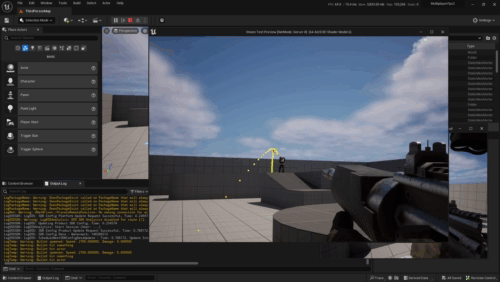
In a smaller map, I adjusted the range before the bullet drop (and projectile spawn) initiates. You can witness the moment when the red debug sphere appears and the trail is drawn after it. While the GIF’s compression might affect clarity, the output log reveals a crucial detail: the longer the distance or the lower the bullet’s velocity, the less damage it inflicts on the target.
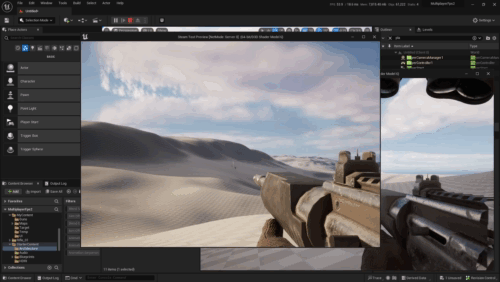
Testing the concept over long distances allowed me to fine-tune both the range and the “muzzle velocity” (for lack of a better term) of the projectiles, adapting them dynamically to the situation. It also demonstrated how easily I could adapt the range and muzzle velocity (or a similar appropriate parameter) of the projectile to match the situation.
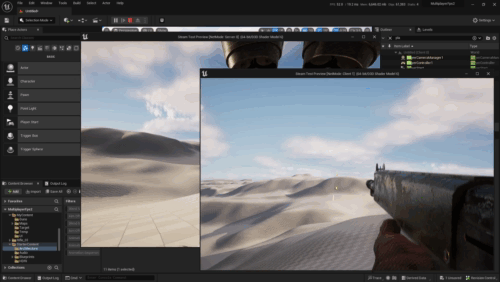
Additionally, this system is fully replicated in multiplayer. So when two players wield different firearms, the one with the higher caliber firearm can shoot farther than their opponent, adding an element of realism and strategy to engagements.
In conclusion, the journey to implement realistic ballistics in my game has been a thrilling endeavor. It’s a delicate balance of realism and gameplay performance, but I’m excited about the possibilities it opens up. As I continue to refine this system, I look forward to pushing the boundaries of immersive gunplay in my game.
